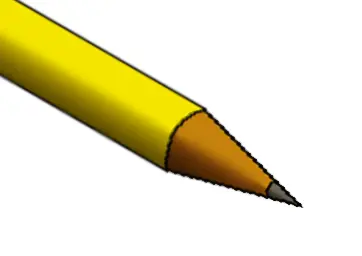Oh so you’re telling me that my storage unit is actually incredibly well optimised for space efficiency?
Nice!
With straight diagonal lines.

Homophobe!
hey it’s no longer June, homophobia is back on the menu
Why are there gaps on either side of the upper-right square? Seems like shoving those closed (like the OP image) would allow a little more twist on the center squares.
there’s a gap on both, just in different places and you can get from one to the other just by sliding. The constraints are elsewhere so wouldn’t allow you to twist.
Oh, I see it now. That makes sense.

You have a point. That’s obnoxious. I just wanted straight lines. I’ll see if I can find another.
I think this diagram is less accurate. The original picture doesn’t have that gap
if I ever have to pack boxes like this I’m going to throw up
I’ve definitely packed a box like this, but I’ve never packed boxes like this 😳
the line of man is straight ; the line of god is crooked
stop quoting Nietzsche you fucking fools
Is this a hard limit we’ve proven or can we still keep trying?
It’s the best we’ve found so far
We actually haven’t found a universal packing algorithm, so it’s on a case-by-case basis. This is the best we’ve found so far for this case (17 squares in a square).

Figuring out 1-4 must have been sooo tough
It’s kinda hilarious when the best formula only handles large numbers, not small. You’d think it would be the reverse, but sometimes it just isn’t (something about the law of large numbers making it easier to approximate good solution, in many cases)
If there was a god, I’d imagine them designing the universe and giggling like an idiot when they made math.
That tiny gap on the right is killing me
That’s my favorite part 😆
Why doesn’t he just make the square bigger? That’d be more efficient.
That’s not more efficient because the big square is bigger
I think people have a hard time wrapping their heads around it because it’s very rare to have this sort of problem in the real world. Typically you have a specific size container and need to arrange things in it. You usually don’t get to pick an arbitrary size container or area for storage. Even if you for something like shipping, you’d probably want to break this into a 4x4 and a separate single box to better fit with other things being shipped as well. Or if it is storage you’d want to be able to see the sides or tops. Plus you have 3 dimensions to work with on the real world.
See, that’s the problem with people nowadays?They want to minimalise everything.
They should just slow down and breathe.
It’s important to note that while this seems counterintuitive, it’s only the most efficient because the small squares’ side length is not a perfect divisor of the large square’s.
this is regardless of that. The meme explains it a bit wierdly, but we start with 17 squares, and try to find most efficient packing, and outer square’s size is determined by this packing.
Did you comment this because you think the people here are stupid?

Bro, the people here, like the people everywhere, ARE stupid.
It’s always better to be explicit. I’m one of the stupid people who learned some things reading the comments here and I’ve got a doctoral degree in aero astro engineering.
What? No. The divisibility of the side lengths have nothing to do with this.
The problem is what’s the smallest square that can contain 17 identical squares. If there were 16 squares it would be simply 4x4.
And the next perfect divisor one that would hold all the ones in the OP pic would be 5x5. 25 > 17, last I checked.
He’s saying the same thing. Because it’s not an integer power of 2 you can’t have a integer square solution. Thus the densest packing puts some boxes diagonally.
Here’s a much more elegant solution for 17

https://kingbird.myphotos.cc/packing/squares_in_squares.html

Mathematics has played us for absolute fools
Why can’t it be stacked up normally? I don’t understand.
You could arrange them that way, but the goal is to find the way to pack the small squares in a way that results in the smallest possible outer square. In the solution shown, the length of one side of the outer square is just a bit smaller than 12. If you pack them normally, the length would be
larger thanexactly 12. (1 = the length of one side of the smaller squares.)
If you can put the diagonal squares from the 17 solution in a 2-3-2 configuration, I can almost see a pattern. I wonder what other configurations between 17 and 132 have a similar solution?
I hate this so much
Initially I thought 4x4 square but this is a square of 4.675 sides. Reasonable. Clever maths though.
It is one prove more, why it is important to think literally out of the box. But too much people of this type
Unless I’m wrong, it’s not the most efficient use of space but if you impose the square shape restriction, it is.
That’s what he said. Pack 17 squares into a square
My point was that it doesn’t break my brain at all when considering there’s an artificial constraint that affects efficiency and there’s just not going to be a perfect solution for every number of squares when you consider the problem for more than just 17 squares
That’s what makes it a puzzle. That’s what a puzzle is.












